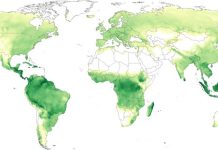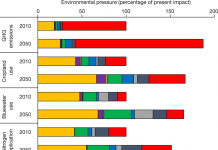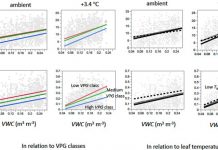Maud Bernard-Verdier Marie-Laure Navas Mark Vellend Cyrille Violle Adeline Fayolle Eric Garnier. Community assembly along a soil depth gradient: contrasting patterns of plant trait convergence and divergence in a Mediterranean rangeland. Journal of Ecology 2012
Summary
- Understanding how environmental factors drive plant community assembly remains a major challenge in community ecology. The strength of different assembly processes along environmental gradients such as environmental filtering and functional niche differentiation can be quantified by analysing trait distributions in communities. While environmental filtering affects species occurrence among communities functional divergence or convergence is strongly related to species abundances within communities which few studies have taken into account. We examine the trait-mediated effect of these two processes along a stress-resource gradient.
- We measured species abundances and the distributions of eight traits related to vegetative and regenerative phases in plant communities along a gradient of soil depth and resource availability in Mediterranean rangelands. We quantified environmental filtering defined as a local restriction of trait range and trait divergence based on abundance-weighted trait variance using a two-step approach with specifically designed null models.
- Communities presented a clear functional response to the soil gradient as evidenced by strong trends in community-weighted trait means. We detected environmental filtering of different traits at both ends of the gradient suggesting that contrary to widespread expectations trait filtering may not necessarily be the result of abiotic filtering under harsh conditions but could likely also result from biotic interactions in productive habitats.
- We found marked shifts in trait abundance distributions within communities along the gradient. Vegetative traits (e.g. leaf dry matter content) diverged on shallow soils reflecting the coexistence of distinct water- and nutrient-use strategies in these constrained habitats and converged with increasing soil resource availability. By contrast regenerative traits (e.g. seed mass) tended to diverge towards deeper soils while plant reproductive heights diverged all along the gradient.
- Synthesis: Our study highlights how the combination of abundance data with traits capturing different functional niches is critical to the detection of complex functional responses of plant communities to environmental gradients. We demonstrate that patterns of trait divergence and filtering are strongly contingent on both trait and environment such that there can be no expectation of a simple trend of increasing or decreasing functional divergence along a gradient of resource availability.
Stephanie A. Socher Daniel Prati Steffen Boch Jörg Müller Valentin H. Klaus Norbert Hölzel Markus Fischer. Direct and productivity-mediated indirect effects of fertilization mowing and grazing on grassland species richness. Journal of Ecology 2012100(6







